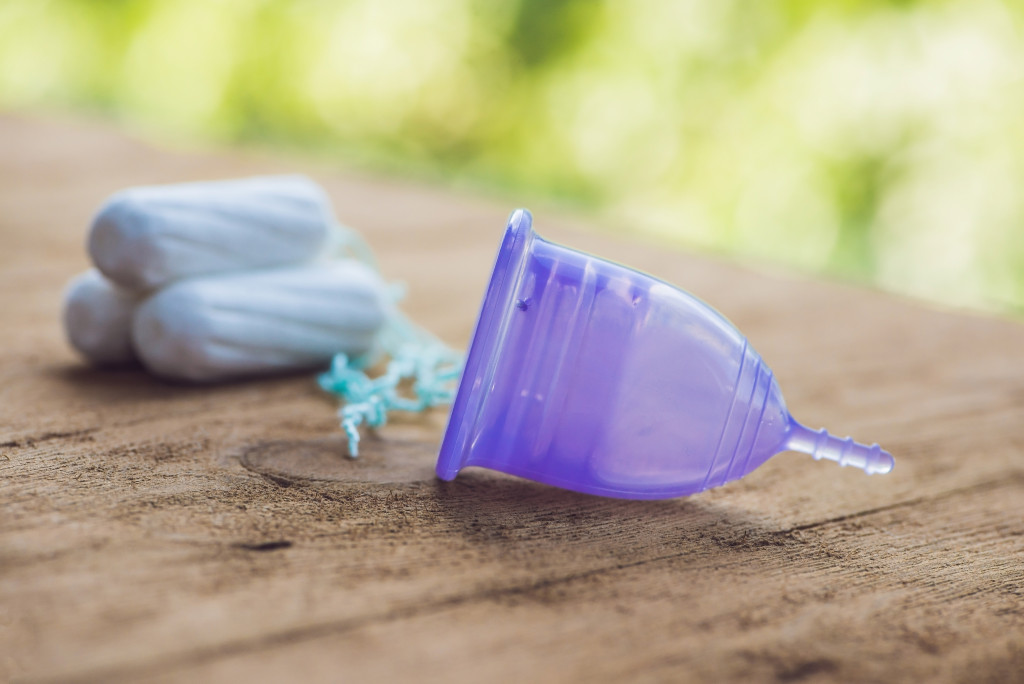What is a menstrual cup? A menstrual cup is a washable feminine product for hygiene. It’s a little funnel-shaped cup commonly made of silicone that women can insert into their vagina to collect and catch period fluid.
Compared to tampons and pads, cups can keep more fluids, and that’s why many women are switching to this method. Depending on the flow, a woman can wear a cup for 12 hours without any worries. Most menstrual cups in the market are reusable. You can wash the product once it’s full and put it back in. But there are some disposable cups in the market too. Read more below to learn more about menstrual cups and why it can be a life-changing experience to switch to this hygiene product.
Using a Menstrual Cup
Talking with your gynecologist is essential if you’re planning to use a menstrual cup. Even though you can buy this product over-the-counter, you have to know your size, as wearing the right size is essential to prevent leaks and discomfort. Often, most brands offer small and large. Some factors that would determine your correct size include:
- Cervix length
- Age
- Flexibility and firmness of the cup
- Pelvic floor muscles strength
- Cup capacity
- If the woman has given vaginal birth
Small menstrual cups are typically recommended for women below 30 years of age who haven’t given birth vaginally. On the other hand, large menstrual cups are often for women above 30 who have heavier periods and have given birth through the vagina.
How to Use a Menstrual Cup
If you’re used to using a tampon, putting in a menstrual cup is not so different. You should find it comparatively easy to put in a menstrual cup. Just make sure to follow these steps:
- Clean your hands and wash with soap and water.
- Apply lube or water or to the opening of the cup.
- Fold the menstrual cup in half. Be sure to hold the fold tightly.
- Insert the cup into the vagina, allowing it to sit below the cervix.
- After inserting the cup, slowly rotate it. The cup should open, creating a seal the prevents leaks.
If inserted correctly, menstrual cups should not be uncomfortable. You shouldn’t be able to feel it’s inside you at all. You can jump, swim, walk, stand without feeling any discomfort.

Cup Aftercare
You should clean menstrual cups with soap and water before reusing them. Wearers should also empty it at least twice a day, but you can wash it whenever you like. Ideally, it should last for 12 hours without leans before re-washing.
Furthermore, menstrual cups can last for half a year to a decade with proper care. Take note that disposable menstrual cups should not be reused.
Advantages
1. Comfortable. Unlike tampons, menstrual cups are designed with comfort in mind. What makes it even better is that you can wear it while you’re working out. So if it’s time for your cardio workout and you’re on your period, wear a menstrual cup, and don’t forget to wear the best workout headbands to stay stylish.
2. Long-lasting. Tampons need to be replaced every 4 hours, depending on the menstrual flow. But menstrual cups can last longer, making them the perfect menstrual product for overnight use.
3. Large capacity. One menstrual cup can hold at least 1 ounce of period fluid, twice the amount a tampon can hold. You can find this particularly comforting during your heavy days.
4. Less odor. Because the period fluid doesn’t get exposed to air, it will never start to smell, a common issue for most women.
5. Eco and budget-friendly. As mentioned, with proper care and use, one menstrual cup can last for a decade. Hence, reducing the need to buy tampons or pads every month.
Disadvantages
1. Challenging to find the right fit. Often, new users of menstrual cups find it hard to determine the right size for them. But with the help of a professional, you can find what suits you in no time.
2. Messy insertion and removal. If you’re new to menstrual cups, things can get messy at first. It’s recommended to avoid washing your cups in public restrooms until you get the hang of it.
3. Interfering with IUD. A few manufacturers do not recommend the use of menstrual cups to women with IUD. However, no evidence can support this claim in this writing. It would be best to talk to your doctor for safety.
As you can see, women can be comfortable even on their red days. If you want to get rid of the discomfort brought by wearing tampons or pads, it’s probably time to consider using menstrual cups. After all, they are way more cost-efficient and environmentally friendly than other methods.

